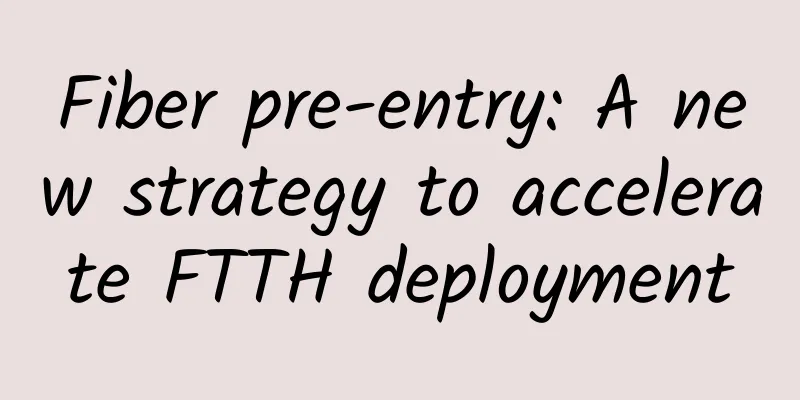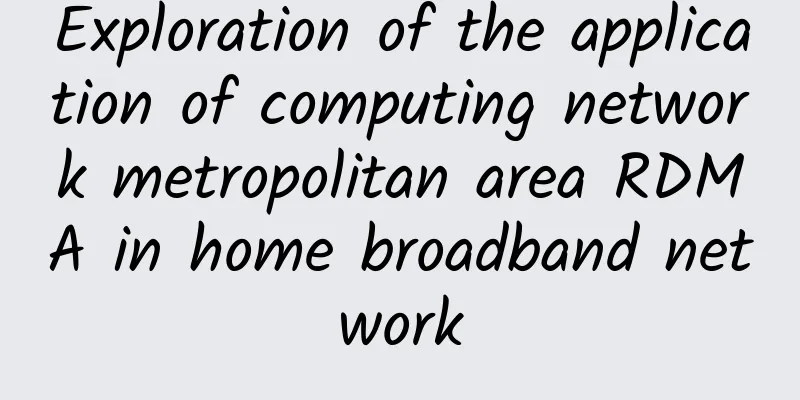Fiber pre-entry: A new strategy to accelerate FTTH deployment

|
With the progress and development of human society, water, electricity, and gas have become essential infrastructure for people's lives. It is hard to imagine how a house without supporting facilities such as water and electricity can be sold. At present, we are entering the digital age from the industrial age. The prosperity and development of digital applications are changing people's lifestyles, but broadband infrastructure, as a carrier of digital life, has not kept up and has not become a standard infrastructure for housing. The reason is that laying optical fiber requires re-construction, which brings additional difficulties to both operators and users, increases a lot of money and time consumption, and ultimately seriously affects the digitalization process.
Challenges of FTTH Construction for Operators At present, FTTH has become the mainstream mode for operators to build new broadband networks. However, at the same time, operators are also generally facing the situation that traditional businesses are squeezed by OTT and operating profits are declining. The large investment and long payback period of FTTH network construction are one of the common problems facing operators. According to industry statistics, the cost of FTTH last kilometer to each household accounts for 10% to 20% of the cost per household. The second problem is that the laying of the last kilometer of optical fiber often faces obstruction from property management and non-cooperation from users, such as property management deliberately delaying the approval time, asking for exorbitant prices or making unreasonable demands for their own selfish interests, and even deliberately destroying broadband facilities; users are also unwilling to cooperate because routing and drilling will damage the decoration. The third problem comes from the technical aspect. There are thousands of buildings with very different scenarios, which makes the laying of optical fiber difficult and time-consuming. Some buildings are difficult to complete the laying and renovation of optical fiber due to historical reasons. Two-pronged approach to solve the problem of fiber-to-the-home Real estate developers have long been accustomed to providing pipes and cables for electricity, telephone and cable TV services for newly built houses. The most typical model is that developers cooperate with service providers. When building and renovating houses, developers provide pipes to connect houses/buildings to existing public facilities outside the building red line. Generally, there are 2 telephone pipes, 1 cable TV pipe and 4 power pipes. On top of this, the cost of adding 2 fiber optic pipes in the same trench is very small, and it can avoid the weeks of permit application, design, coordination and construction work brought about by re-laying pipes. At the same time, the government should formulate standards and require developers to provide fiber-to-the-home ducts or direct fiber-to-the-home when building or renovating houses. Indoor fiber-optic ducts can also be constructed at the same time as the wiring and positioning of power, telephone and cable TV ducts, greatly improving the speed of fiber-optic deployment and reducing the cost of fiber-optic deployment. Fiber-to-the-home ducts should follow industry standards (TIA/ANSI), and their bending radius, length, gap and terminal location should match technical requirements, and be equipped with appropriate telecommunications cabinets according to the number of households. Optical fiber pre-buried into homes policy gradually becomes industry standard In recent years, more and more regions and countries have begun to implement fiber-to-the-home policies. In 2012, the Ministry of Industry and Information Technology of China jointly with the Ministry of Housing and Urban-Rural Development issued the "Specifications for Construction and Acceptance of Fiber-to-the-Home Communication Facilities in Residential Areas and Residential Buildings", requiring residential construction units to simultaneously build communication pipelines in residential areas and communication dark pipes and dark wires in buildings, lay fiber-to-the-home in advance, and reserve equipment rooms. This move has greatly accelerated the progress of China's fiber deployment. In 2014 alone, China completed 50 million lines of FTTH construction, and it is expected to reach 80 million lines in 2015. Many cities in the United States have also implemented the fiber-to-the-home requirement. For example, Loma Linda in California implemented this requirement early in its "Connected Community Project" (LLCCP). Its city council requires: "All new commercial and residential buildings in the city (or renovation of more than 50% of old buildings) must be equipped with new network infrastructure to meet people's communication needs." Its specific requirements also include: laying fiber optic pipelines during real estate development, building community optical distribution frames, configuring data cabinets in master bedrooms, connecting optical fibers to data cabinets and distribution frames, installing two Cat6 interfaces and one coaxial interface in each room, and the design and materials of the optical fiber network are all managed by the city in a unified and standardized manner. Some parts of Europe have also implemented the requirement of fiber-to-the-home. In May 2014, the European Union passed the DIRECTIVE 2014/61/EU Directive, requiring the full implementation of the fiber-to-the-home policy in 2017: All building permit applications submitted after December 31, 2016, whether new or renovated, must be equipped with high-speed broadband network infrastructure, and a "Broadband-ready" label will be issued after completion and acceptance, and it is stipulated that its network must be open to broadband service providers fairly and without discrimination. In addition, there are South Korea, which implemented it very early, Morocco, which is about to release policies, and Indonesia, which is actively promoting it... Many countries around the world are actively promoting fiber-to-the-home policies. Although pre-buried fiber optic cable has put forward new requirements for developers, through the coordinated construction of other pipelines, the incremental burden on developers is very small. However, it has a significant effect on the construction of FTTH and the promotion of regional digitalization, especially in areas with a large number of new and renovated houses. In order to improve the progress of FTTH deployment, accelerate the digital transformation, and promote macroeconomic development, we believe that pre-buried fiber optic cable should become a new supporting facility for housing in the digital age, and be promoted and implemented as a strategic requirement. |
<<: Analysis of the development pattern of domestic and foreign optical communication markets
>>: Is wireless mesh networking viable for the enterprise?
Recommend
Byte One: The website cannot be displayed, how to troubleshoot?
Hello everyone, I am Xiaolin. A reader was asked ...
What is Single Pair Ethernet (SPE) and how is it used in industrial applications?
[[416579]] Single-pair Ethernet was originally de...
DMIT: Hong Kong CN2 GIA line $298.8/year-2GB/40G SSD/500GB@300Mbps/optional quarterly payment
DMIT.io is a foreign hosting company founded in 2...
Talking about the "security gate" of Facebook and Google: the "cheese" and "traps" of SD-WAN
On September 28, hackers used Facebook's secu...
HostKvm 10th Anniversary Recharge $50 Get $10, 20% off all items, Hong Kong VPS/Singapore VPS/Japan VPS monthly payment starts from $5.6
Time flies, HostKvm has been established for 10 y...
Deep understanding of DNS tunnel communication in practical scenarios
Preface Recently, we conducted an in-depth analys...
How to realize LoRa networking without a gateway?
As a low-power wide area network communication te...
10 ways 5G technology will change the environment
5G technology will enable any connected electrica...
Relay2 launches edge computing cloud solution to reshape the innovative value of networks and services
[51CTO.com original article] With the rapid devel...
The Implications of the ZTE Incident for Operators
Although the ZTE incident has not yet reached a f...
Bonree ONE 2.0: Fully launching the full-link observability journey
Recently, IDC released the "China IT Unified...
5G is coming! How much does a 5G phone cost? Do you know the 5G charging standards?
[[267637]] On June 6, China officially issued 5G ...
Unlocking the full potential of 5G: Innovating with network effects
The emergence of 5G technology has aroused people...
9 killer apps for edge computing
Edge computing provides a new paradigm for runnin...
China Unicom's mixed ownership reform is the trigger for the restructuring of the telecommunications industry order
How will China Mobile and China Telecom respond t...





![[Black Friday] ITLDC: 40% off unlimited traffic VPS annual payment, 25% off dedicated server, 14 data centers in the United States/Singapore/Netherlands](/upload/images/67cabff1c82b9.webp)



